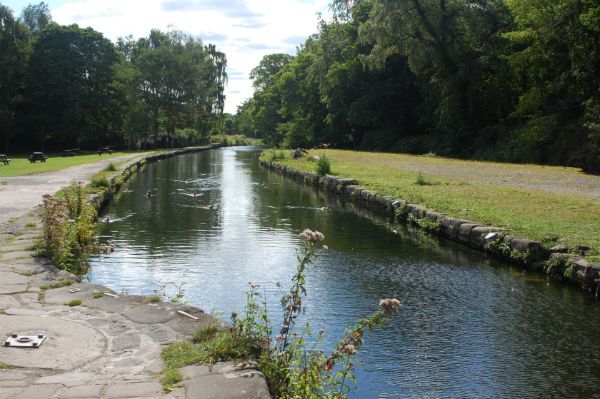
Richard Arkwright had a problem. He had chosen the Derwent Valley in Derbyshire because of its ample water supply, which he could harness to power his revolutionary mills, the world’s first successful water-powered cotton-spinning factory complex. That was all well and good, but he still had a major problem. When he had – with difficulty – shipped the raw materials he needed for the mills at Cromford, Derbyshire to the site, using the services of pack-horse trains over the Peak District to move the cotton, he faced the enormous task of shipping the finished thread out!
When a proposal was made to link the Derwent Valley, on the edge of the Peak District, to the large markets of Nottingham, Leicester, and Birmingham (and even further afield) via a new canal, which would link with the existing Erewash Canal, Sir Richard initially became its most enthusiastic supporter. Such a canal would also enable coal mines in the Somercotes and Pinxton area, the iron works at Butterley and Somercotes, the limestone quarries at Crich and the lead mines at Alderwasley to move their products swiftly and cheaply to market.
William Jessop, a local engineer of great renown (Aside: When I was born, my parents lived on Jessop Street) offered to perform the survey for the canal. The surveyed line of the new Cromford Canal was 14 1/2 miles long with four tunnels, 14 locks and bridges and aqueducts; the water was intended to be drawn from the River Derwent, and it was this that caused the first dispute with Sir Richard Arkwright, who depended on the water supply to drive his mills. Eventually modifications, including a steam pumping engine (at Leawood Pump House) were able to keep the western arm of the canal supplied throughout the working week. Thanks to the work of Jessop and his business partner, Benjamin Outram, (who was also appointed as one of the Assistant Engineers) the canal opened in 1794, and included what was the longest canal tunnel in Europe, Butterley Tunnel, linking the western and eastern sections.
Despite the great economic stimulus engendered by the Cromford Canal, its triumph was relatively short-lived. The rise of the great railway companies started in the North of England (the Stockton & Darlington Railway was the first public passenger/goods line to open in 1825), the Derwent Valley Line, parallel to the canal opened in 1839, and immediately began to take trade away from it. The Midland Railway eventually took over the line and extended it north and westwards to Manchester. The Cromford Canal, like many others, fell into the hands of the railway companies, which slowly transferred freight to their own network and closed them. The partial collapse of the Butterley Tunnel in 1900, due to local mining subsidence, split the canal into and east and west sections – it was finally closed in 1944.
Thanks to the Friends of Cromford Canal, and Derbyshire County Council, the Cromford Wharf area (seen above) has been restored, and the walk along the towpath towards the Leawood Pump House is very popular. The two surviving 18th century warehouses at the Wharf have been restored, as have the adjacent cottages. The very latest news is that the County Council has agreed to dredge the canal from the Wharf to the Pump House, a distance of close to 1.3 miles; this will enable fare-paying passengers to be carried along the canal for the first time since 1989. The work will take nine weeks, and cost £300,000 – a sum which is causing some local anger in these hard times, despite the obvious increase in tourism that would occur.
The Cromford Wharf and the Cromford Canal are part of the Derwent Valley Mills UNESCO World Heritage Site, a cradle of the Industrial Revolution, and should definitely be on your ‘bucket list’!
http://peoplesmosquito.org.uk
http://shortfinals.wordpress.com


